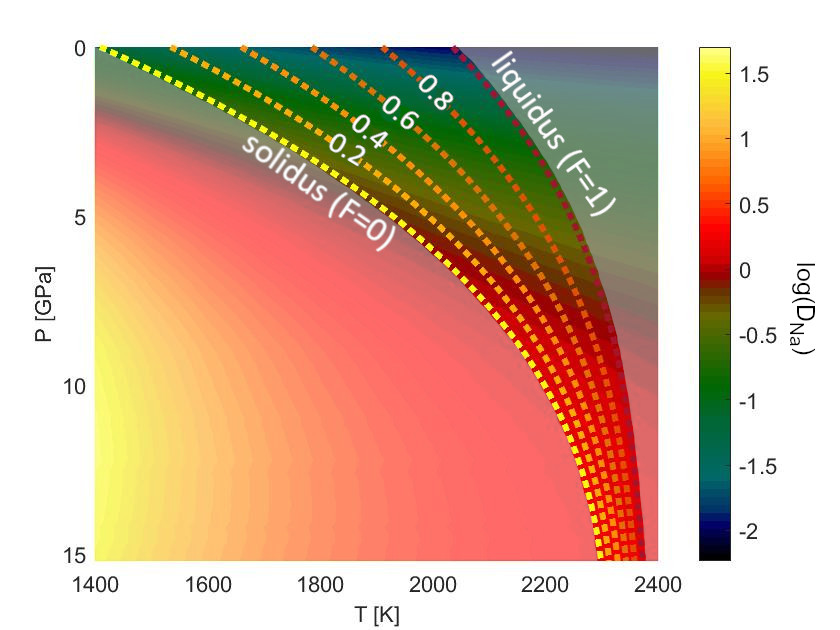Application of a P-T dependent partition coefficient model to a 1D thermal evolution code of Mars
- Freie Universität Berlin, Geological Sciences, Planetary Science and Remote Sensing, Berlin, Germany (julia.schmidt@fu-berlin.de)
In partial melt zones, incompatible elements like the heat producing elements (HPE) K, Th, and U are redistributed from the solid to liquid material. If the melt is in an area where it is buoyant, it transports the incompatible elements towards the surface and leaves a depleted upper mantle area behind. Partition coefficients can act as a measure for the amount of the redistributed elements. They are highly sensitive to temperature, pressure, and composition and can change by multiple orders of magnitude along the peridotite solidus from 0-15 GPa (Fig. 1, Schmidt and Noack, 2021). However, since there is a lack of high-pressure models and experimental data, partition coefficients in mantle evolution models were generally taken as constant values.
Clinopyroxene is a common mantle material which takes up most trace elements and is therefore highly relevant for redistribution processes. Also, compared to other minerals that can be found in the upper mantle of Mars and Earth, clinopyroxene undergoes the largest changes of partition coefficients with changes in temperature and pressure. In clinopyroxene, sodium acts as a compatible element with partitioning behaviors similar to incompatible trace elements, which is why it can be used as a reference for modelling other trace elements’ partition coefficients. In this study, we take the parameterization for the partitioning of sodium of Schmidt and Noack (2021) and calculate partition coefficients for HPE at local P-T conditions. This parameterization is derived from a thermodynamic model (Fig. 1) based on Blundy et al (1995) and valid for pressures up to 12 GPa. We apply these calculated partition coefficients to a 1D interior evolution model for Mars and compare the resulting HPE enrichments to the ones obtained with models using constant partition coefficients for variable initial conditions. By doing so, we can compare data obtained from Mars missions to our modelled approach and subsequently constrain the influence the varied parameters and the partitioning model have on the thermal evolution of Mars.

Fig. 1: Thermodynamic model for sodium partitioning in clinopyroxene/melt. Along the peridotite solidus,
the partition coefficients vary up to two orders of magnitude (Schmidt and Noack, 2021).
Schmidt, J.M. and Noack, L. (2021): Clinopyroxene/Melt Partitioning: Models for Higher Upper Mantle Pressures Applied to Sodium and Potassium, SysMea, 13(3&4), 125-136.
Blundy, J. et al. (1995): Sodium partitioning between clinopyroxene and silicate melts, J. Geophys. Res., 100, 15501-15515.
How to cite: Schmidt, J. M. and Noack, L.: Application of a P-T dependent partition coefficient model to a 1D thermal evolution code of Mars, Europlanet Science Congress 2022, Granada, Spain, 18–23 Sep 2022, EPSC2022-587, https://doi.org/10.5194/epsc2022-587, 2022.

